

Perovskia is a magnificent summer to mid-fall bloomer.
Main Perovskia facts
Name – Perovskia artplicifolia
Family – Lamiaceae
Type – bushy herbaceous plant
Height – 2½ to 5 feet (0.7 to 1.5 m)
Soil – rather dry and well drained
Foliage – evergreen
Exposure: full sun – Flowering: summer→mid-fall – Feature: nectar-rich
Very much appreciated in coastal areas, the Perovskia flower’s unusual blue color brings a refreshing touch to flower beds in full sun.
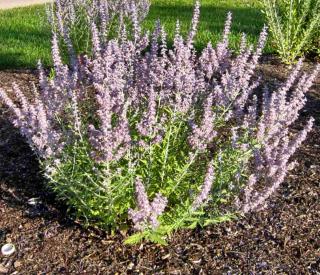 Perovskia is a bush that is best planted in fall or at the beginning of spring. The ideal planting season for most shrubs is always fall.
Perovskia is a bush that is best planted in fall or at the beginning of spring. The ideal planting season for most shrubs is always fall.
To set up a perovskia hedge, place plants at least 20 inches (50 cm) apart, this will produce a very ornamental result.
Once planted, water abundantly and let the soil dry up before watering again, only if it doesn’t rain.
Perovskia can cope with drought very well, and will thus have very low needs in terms of water, even less so as time goes by.
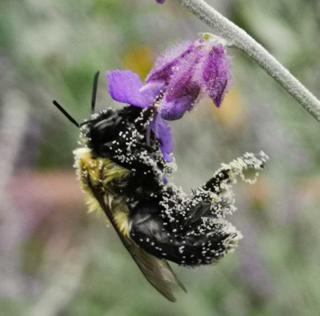 Perovskia fears neither disease nor drought, and chalky soil doesn’t make it afraid, either. Plant it in light garden soil, even rocky soil, with a lot of chalk. Salt won’t disturb it in any way, so it is great along coastal areas. If your soil is heavy, mix coarse sand to the original garden soil when planting. You can also add lime to break up clay.
Perovskia fears neither disease nor drought, and chalky soil doesn’t make it afraid, either. Plant it in light garden soil, even rocky soil, with a lot of chalk. Salt won’t disturb it in any way, so it is great along coastal areas. If your soil is heavy, mix coarse sand to the original garden soil when planting. You can also add lime to break up clay.
In spring, pinch the young stems when they reach a height of 12 to 16 inches (30 to 40 cm). This step helps them increase in vigor, which gives the plant a bit less bend.
At the end of the season, in harsh-wintered climates, you can protect the perovskia clump by ridging it with light earth, or a 6-inch (15 cm) layer of dead leaves. This is a plant that will easily hold down to 14°F (-10°C). Below 14°F (-10°C), the airborne part of the plant dies off, but the clump itself will survive well, and the plant will start growing again in spring.
In February, cut back all the vegetation practically down to ground level. This severe pruning is needed every year, because the younger stems are always much more beautiful.
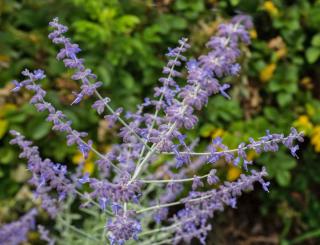 The smallish blue-violet flowers are grouped in light, undulating panicles that are about 12 inches (30 cm) long. The blooming lasts for a long time, sometimes all the way to the first frost spells.
The smallish blue-violet flowers are grouped in light, undulating panicles that are about 12 inches (30 cm) long. The blooming lasts for a long time, sometimes all the way to the first frost spells.
The blue-flowered plant has silvery foliage that is one of the major assets of this deciduous plant. The small green-gray leaves are thin and oval-shaped, with a lot of details. When rumpled, they produce a nice sage-like fragrance.
Thanks to its lightness and to the flexibility of its stems, perovskia is very often used to create natural scenery.
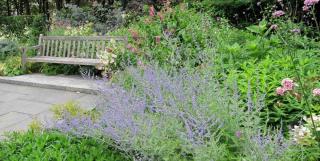 It fits right into perennial flower beds and shrub beds. You can also plant it in denser ranks, every 20 inches (50 cm), to set up a cute land border hedge. It is recommended to plant at least three specimens in close arrangements so that the bunch, when it grows, may look dense enough.
It fits right into perennial flower beds and shrub beds. You can also plant it in denser ranks, every 20 inches (50 cm), to set up a cute land border hedge. It is recommended to plant at least three specimens in close arrangements so that the bunch, when it grows, may look dense enough.
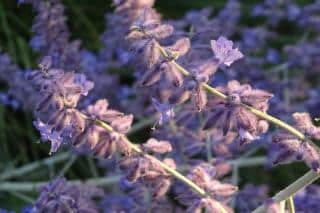 Perovskia doesn’t grow very tall, so it can merge into diverse types of scenery (5 feet (1.5 meters) tall and wide at most, usually reached after about three years).
Perovskia doesn’t grow very tall, so it can merge into diverse types of scenery (5 feet (1.5 meters) tall and wide at most, usually reached after about three years).
Perovskia is perfectly at ease on a sun-covered balcony. Pair it with white, yellow or blue annuals. Use, if this is the case, a pot that is at least 10 inches (25 cm) deep.
Perovskia is the perfect plant for low-lying hedges and edges, and it is much sought after by gardeners who like plants requiring very little care.